Bus Advertising : All things you want to know…
In bus advertising, buses and their related infrastructure is a medium commonly used by advertisers to reach the public with their message. Usually, this takes the form of promoting commercial brands, but can also be used for public campaign messages. Buses may also be used as part of a political or promotional campaign, or as a tool in a commercial enterprise.
Bus advertising descends from similar methods used on streetcars in the early 20th century.
A common location for adverts is inside the bus. Adverts are attached to the corners between the walls and ceiling overhead to catch the eye of passengers, in the same manner as used in rapid transit systems.
KURTC Lowfloor Volvo Bus with a New Look, Colour, Advertisement
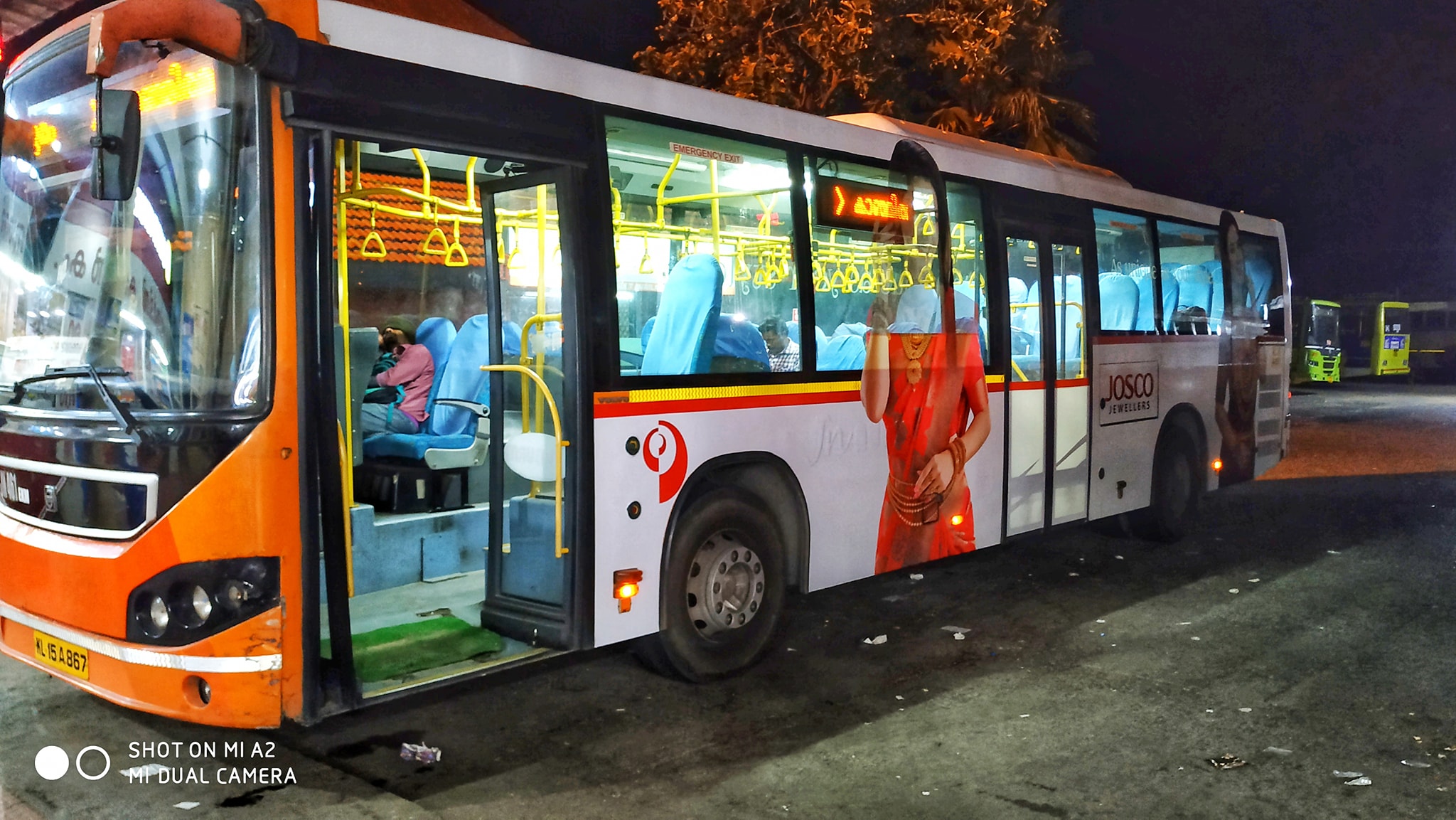
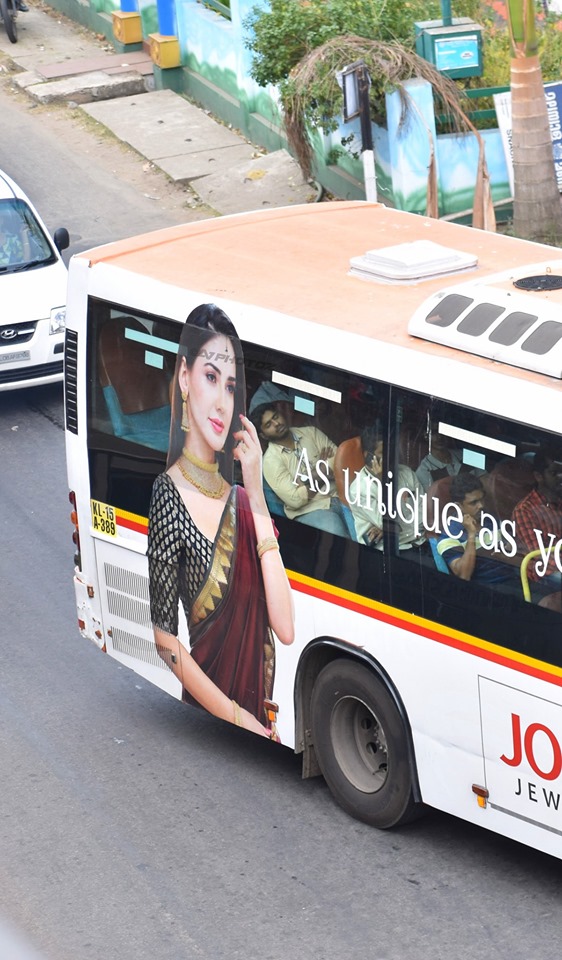

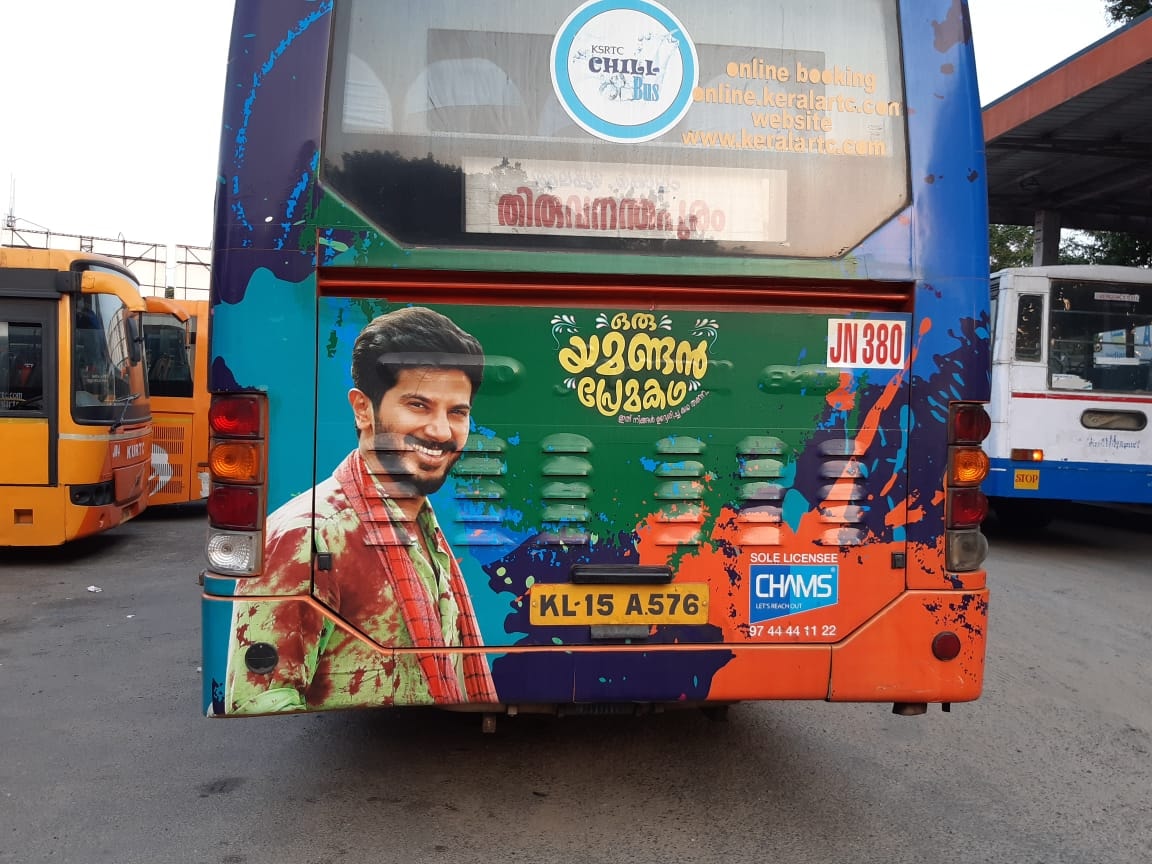

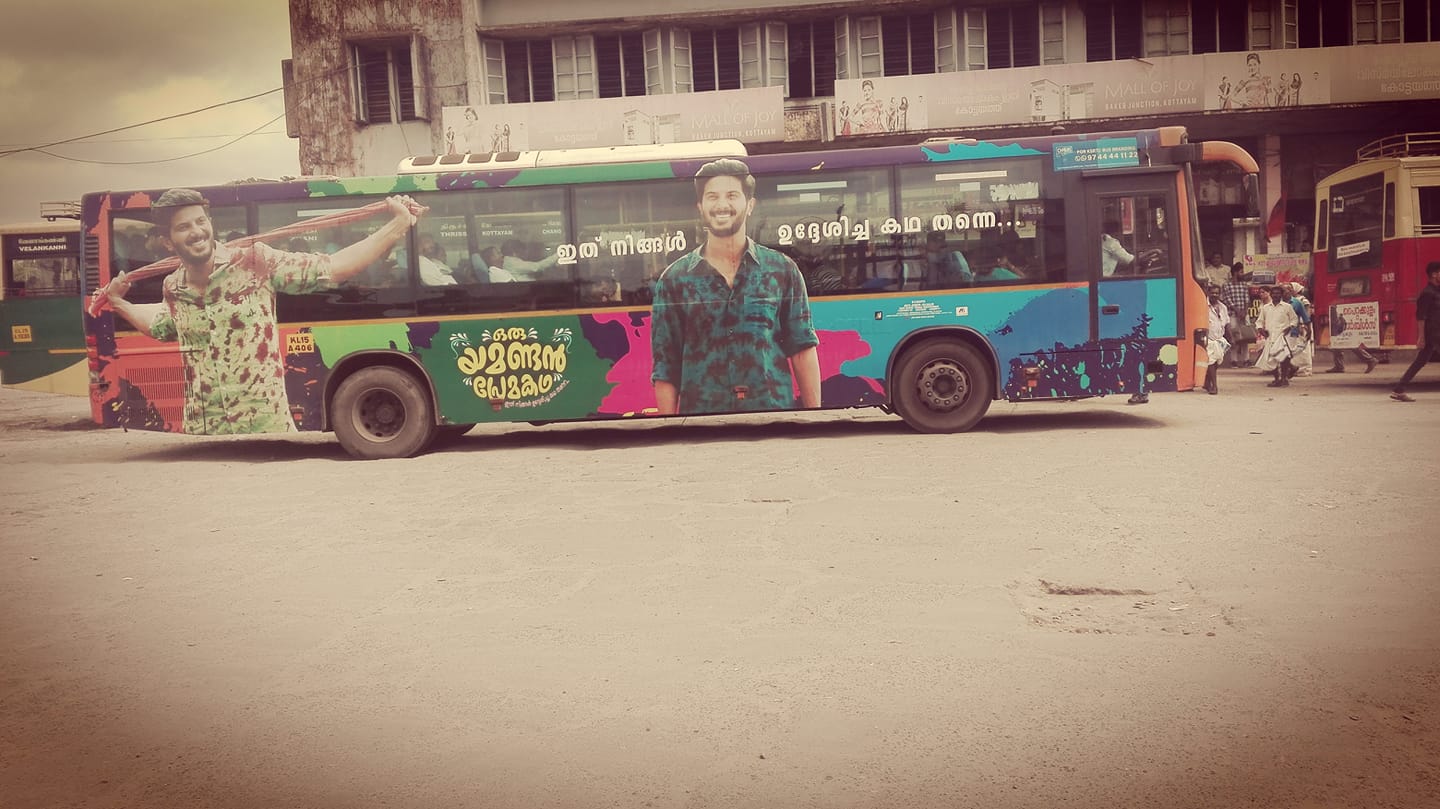
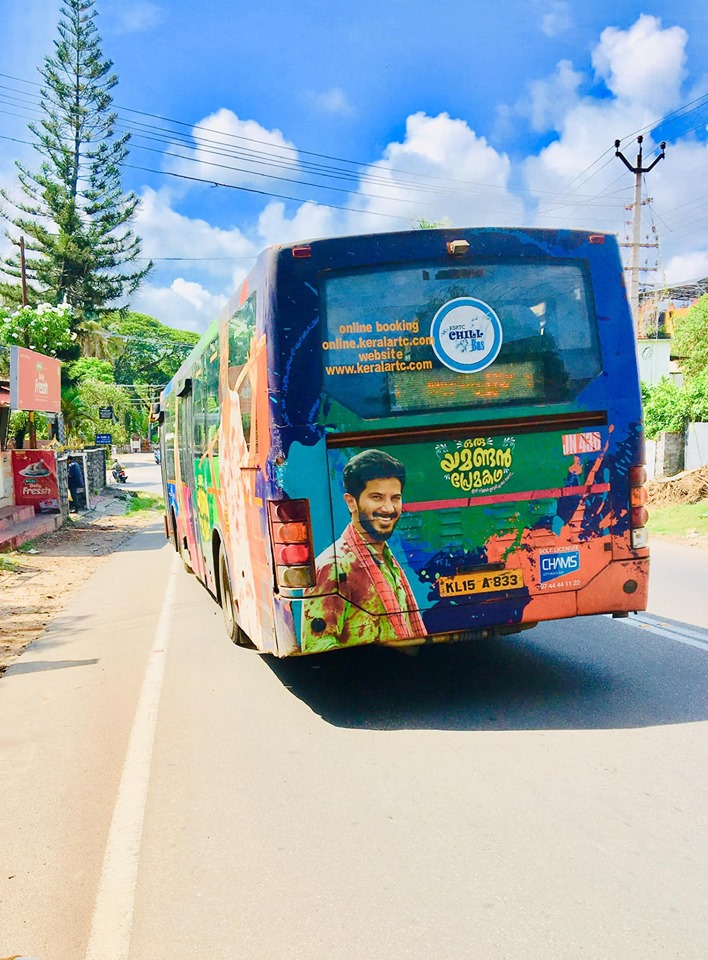
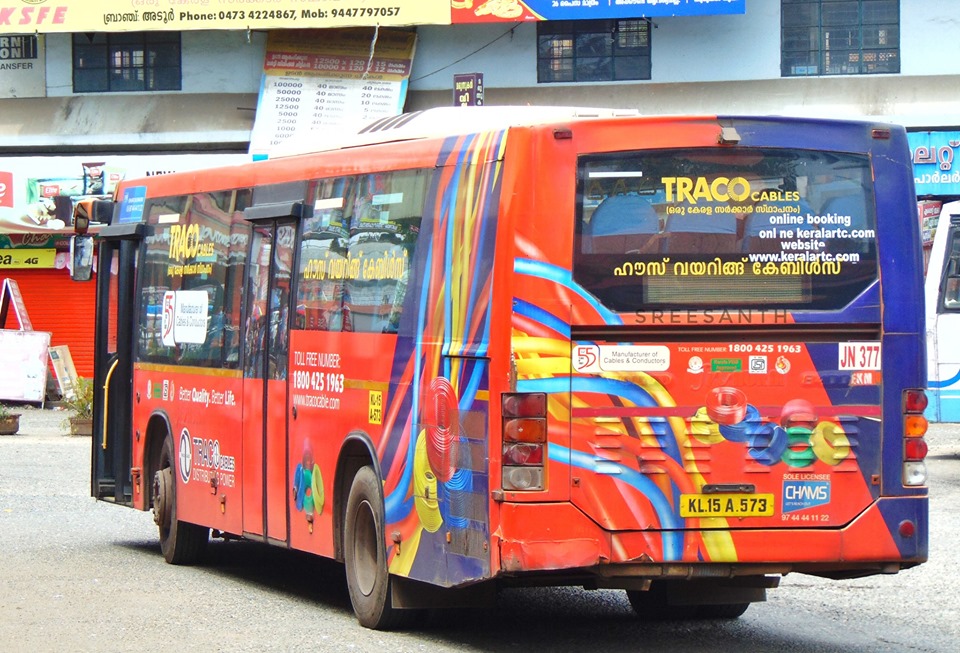

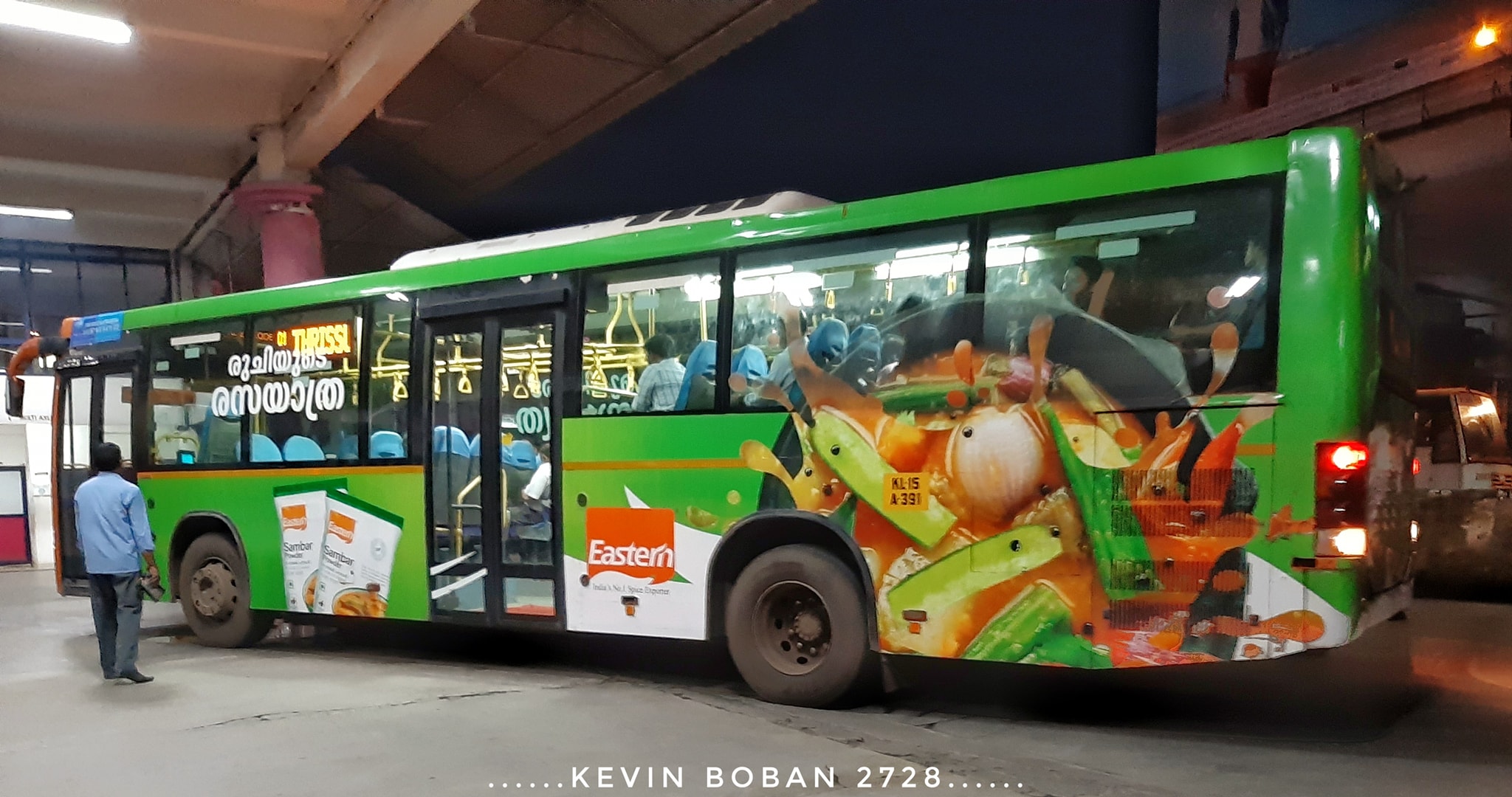
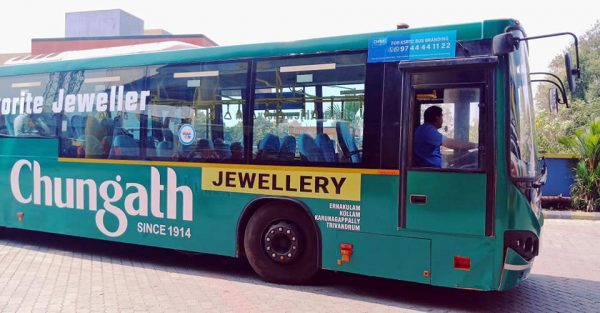
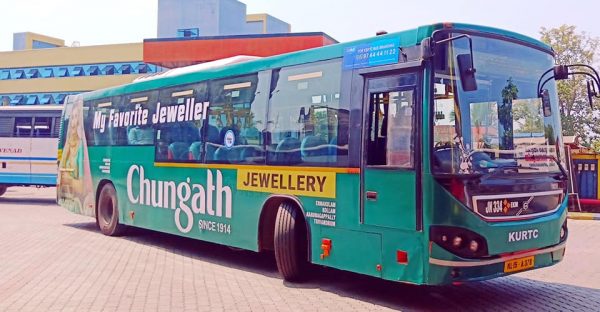
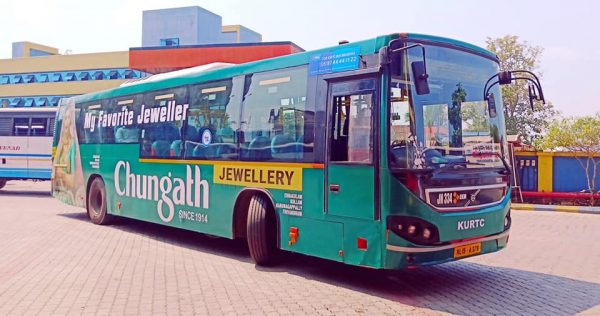
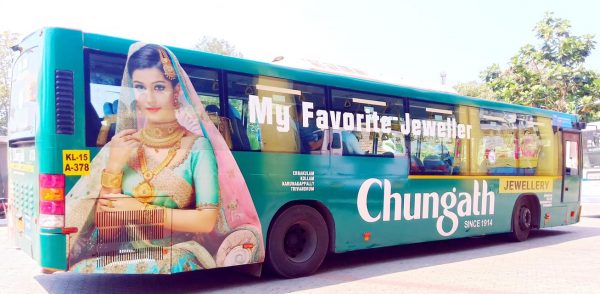
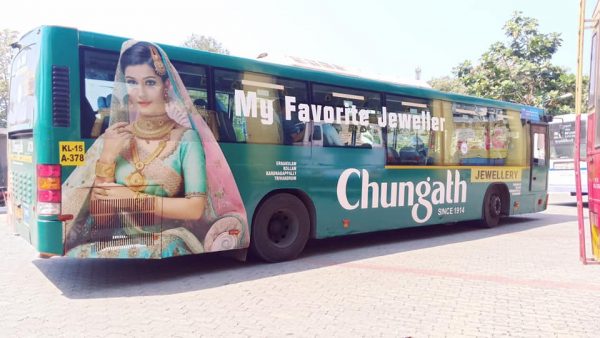
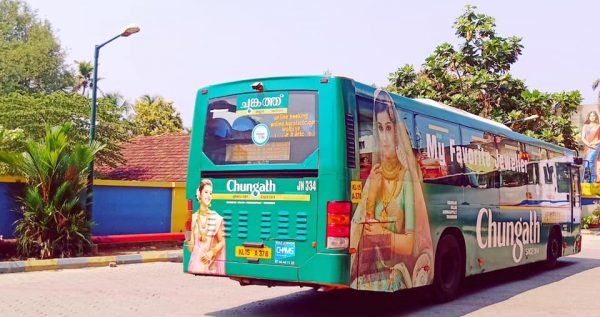
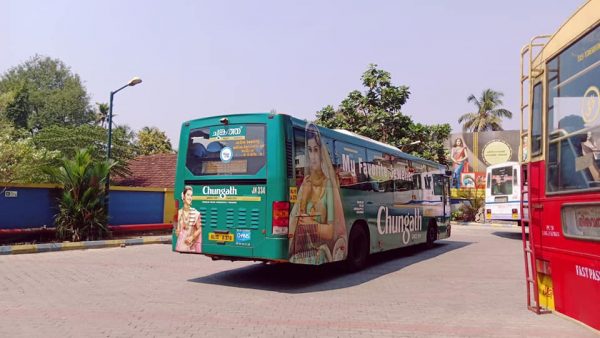
Photos – Shefeek Ibrahim, Arun Vijay, Sreesanth Adoor, Kevin Boban.
Increasingly, companies are using interior television systems to advertise. The most common technology is the LCD-TFT systems in different resolutions: 18.5″ (also side-by-side panels 18,5″ + 18,5″), 21.5″ and stretched monitors in 29.4″.
The LCD-TFT were originally installed to show route information to passengers (next-stop, path, maps, intersection with other routes etc.), then additional public information (messages from bus company, the Public Administration, etc.) and entertainment, which is known with the neologism infotainment. It common to use this space for both public information and advertising, providing both a public service but also a regular income for the different players involved in the public transport.
Bus exteriors : Adverts are often placed as basic rectangular motifs on the side or front of a bus. These may be applied directly to the bus. Additionally, adverts may be printed on placards known as boards, which are slotted into special guide fittings attached to the side of the bus.
Some panel and full side and all-over adverts were traditionally painted on if the length of application warranted it. This would require a reasonable longevity and cost implication for advertisers, due to the requirement to take buses out of service to apply and remove paint schemes. Frequently changed panel adverts would use replaceable boards.
With the advent of adhesive vinyl technologies, this allowed adverts to be rapidly applied and removed over the top of the buses exterior paint as decals, reducing the cost and time.
The invention of see-through graphics, most commonly applied as a self-adhesive perforated window film, allowed the creation of more elaborate designs that could be applied over windows (although for safety reasons not the front window), moving away from the traditional square box design approach to adverts.[c
With the advent of partially transparent window coverage techniques, all over adverts have been applied as a full vehicle advertising wrap windows and all. The transition from screen printing to digital printing has seen an increase in the color range and complexity of advert designs.
Campaign and promotion buses
In addition to public transport buses, all-over advert buses are often privately hired specifically for a special promotional use, such as a political campaign or specific product promotions. These will often make use of open top buses to allow the interaction of the campaigners/promoters with the public.
Legal issues
In Norway, the use of wrap advertising on buses was prohibited by the road authorities. The reason behind the ban was that in an emergency the windows might need to serve as an emergency exit, and that the advertising would make the window harder to break with the emergency hammer. But the bus authorities argued against the ban, pointing out that their tests showed that the thin wrap had no impact on the break ability of the window, but did remove the advertising which covered the windows.



















